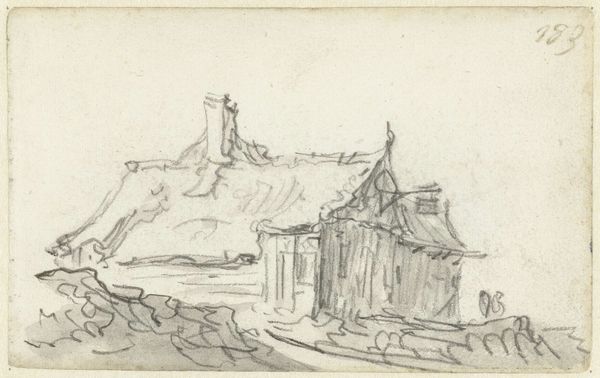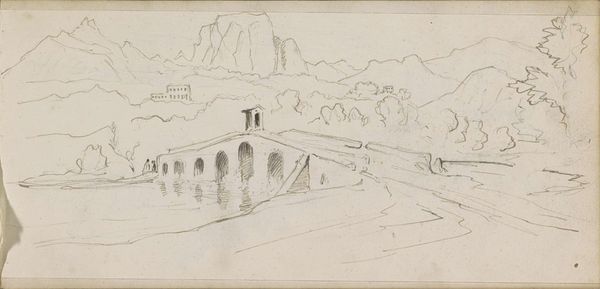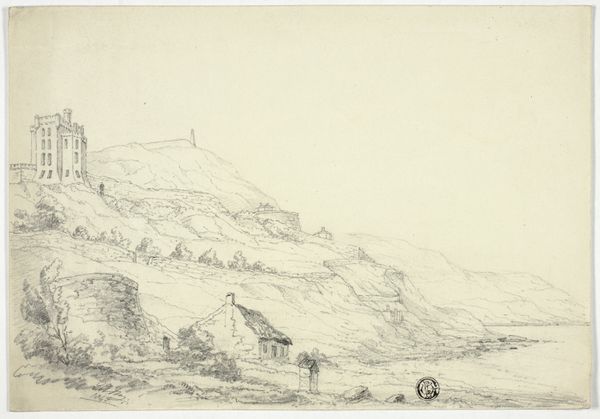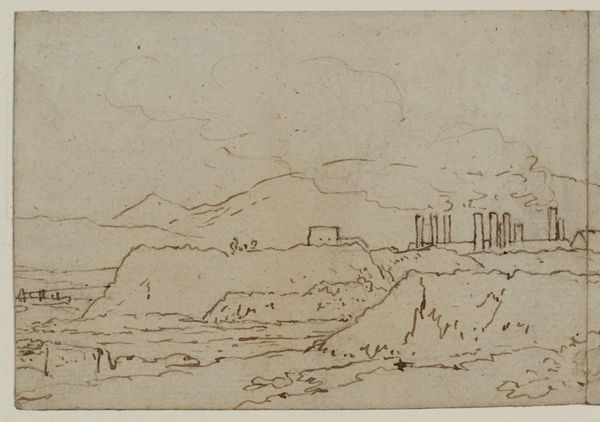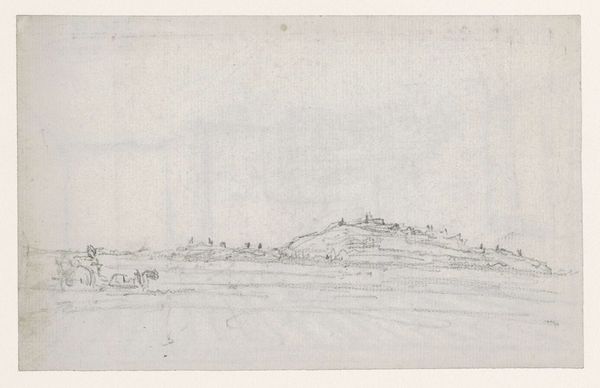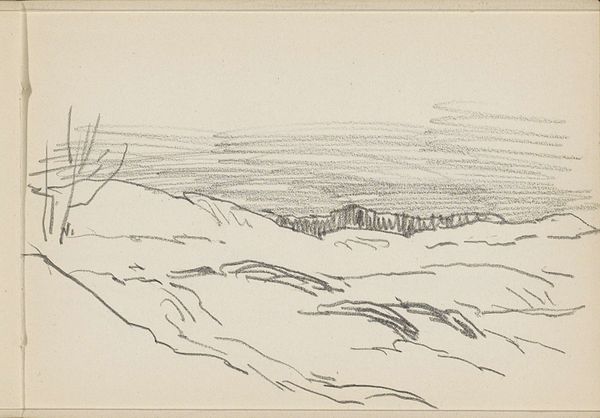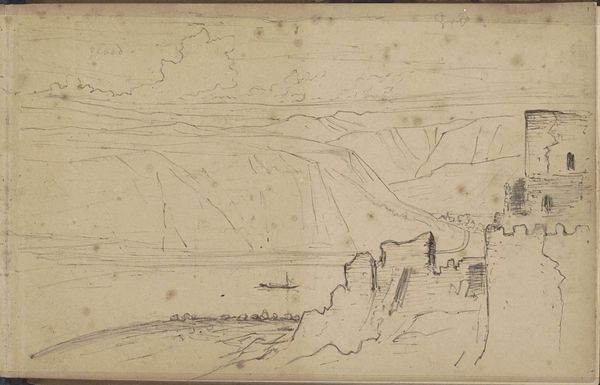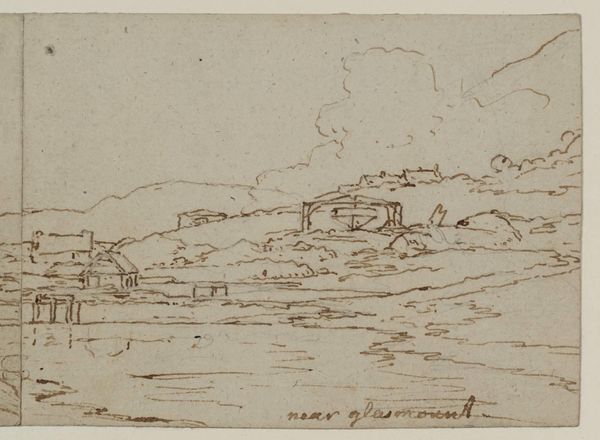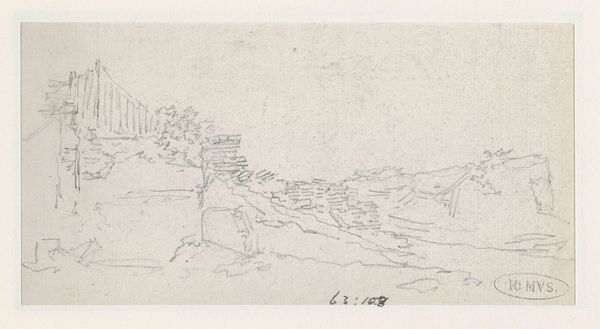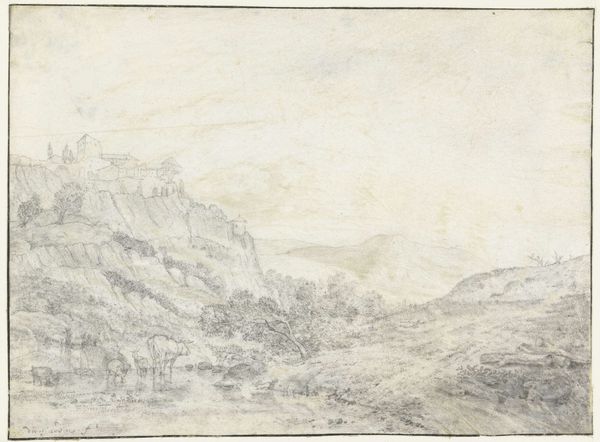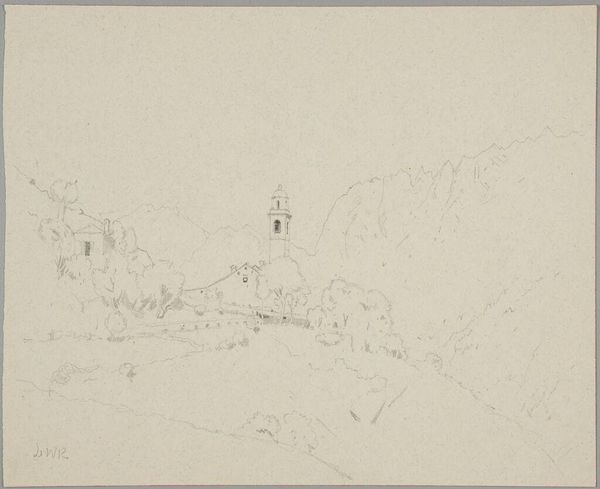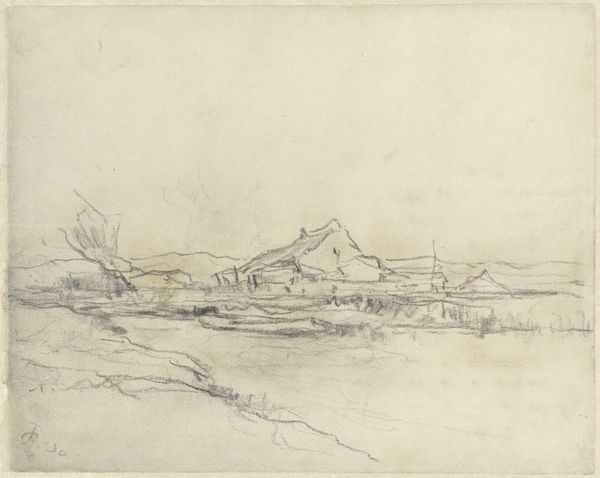
Copyright: Rijks Museum: Open Domain
Curator: This is Anton Mauve's "Landschap met figuren en een toren op een heuvel," a pencil drawing made sometime between 1848 and 1888, and now part of the Rijksmuseum's collection. Editor: My first impression is of a hushed landscape. The monochromatic palette creates a subdued, almost melancholy atmosphere. There’s a real sense of solitude. Curator: It is certainly characteristic of the Romanticism movement, particularly in its fascination with nature. Consider the period: industrialization was rapidly changing the Dutch landscape, and artists like Mauve often turned to rural settings as places of solace, reflection, and perhaps even resistance. The figures are almost incidental. Editor: That tower is striking though—it is like a beacon or watchtower but also quite modest. Who do you think is in it or who made use of it back in the time. How was it related to land use around the surrounding areas? It almost makes you feel like there's a commentary about the watchers vs. the watched. And from whose perspective is the viewer encouraged to engage. Is Mauve encouraging the viewer to ask these same questions? Curator: Well, it would be difficult for Mauve not to reflect the role the Dutch government played in influencing society—land reclamation, infrastructure development and resource allocation shaped lives significantly, reflecting in how the citizens approached art and social matters. His work often engaged with questions surrounding industrial progression that changed social identities as related to land in ways that weren’t available even in preceding generations. Editor: And given the period, you also have to ask about colonial exploitation, something that often gets ignored. Who really owned that land, and from where? Curator: These elements certainly layer complexity into Mauve’s idealized landscape, highlighting tensions of ownership, resource exploitation, and collective transformation. Editor: Indeed. Art gives people that kind of opening into dialogues about difficult concepts like ownership, power structures, progress, the list can be infinite…and that might be why it becomes a crucial piece of what remains available to interpret in an ongoing discourse across multiple viewpoints.
Comments
No comments
Be the first to comment and join the conversation on the ultimate creative platform.
